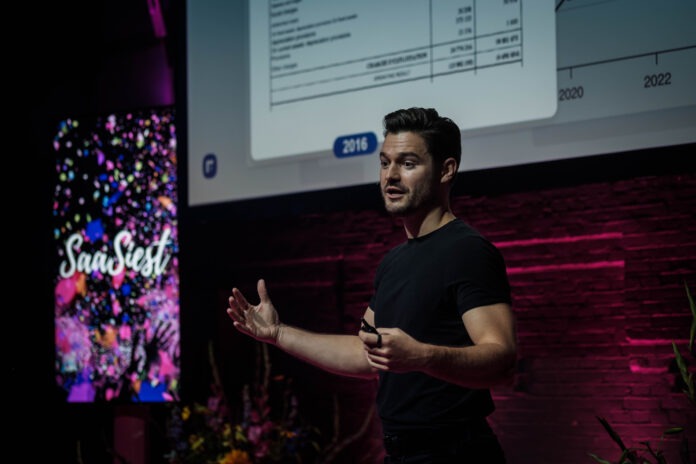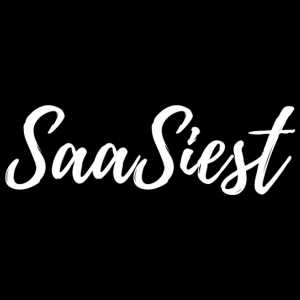What does it take to build a thriving SaaS business in today’s competitive landscape? For Nathan Latka, Founder & Chief Investment Officer at Founderpath, the answer lies not in revolutionary ideas but in disciplined execution. Having interviewed over 3,300 SaaS founders on his podcast, Latka has distilled the secrets of scaling SaaS companies into 33 proven strategies.
These strategies have been applied successfully by founders across Europe, from startups in the Netherlands scaling to $250M ARR to AI-driven innovators adding millions in ARR before AI was a buzzword. Here’s a deep dive into Latka’s playbook and how these strategies are reshaping the SaaS landscape.
The SaaS growth playbook: A framework for every stage
Nathan Latka simplifies the complexities of SaaS growth into a strategic framework, categorizing all growth tactics along two critical dimensions: speed and cost. This framework enables founders to identify the most effective strategies for their company’s stage of growth and available resources.
- Pre-revenue or <$1M ARR: Low-cost, fast-impact tactics are essential. Early-stage companies need to gain traction without burning through limited budgets.
- $1-3M ARR: Scalability starts to take precedence. Founders should focus on replicable strategies that generate consistent growth.
- $3-5M ARR: The priority shifts toward slower, foundational investments—like strengthening the product and establishing operational efficiencies.
- $5M+ ARR: At this stage, high-cost, high-impact strategies become viable, such as acquisitions, expansive hiring, or aggressive marketing.
By aligning strategies to the company’s ARR stage, founders avoid the common pitfall of misallocated resources, ensuring that every dollar and effort delivers measurable returns.
Case Study 1: Omnisend’s organic growth engine
Omnisend’s journey is a testament to the power of disciplined SEO. This bootstrapped SaaS company went from a small player to achieving 200,000 monthly organic clicks on Google. All of this was accomplished without spending a dime on paid ads.
The Omnisend SEO playbook
- Start: In-house SEO team for backlinks and content. Build a backlink network of partners.
- Next: Build a network of copywriters in house and agency.
- Last: Update top 10 blog posts 4 times per year, new content every month.
Omnisend’s strategy wasn’t just about posting frequently,vit was about posting strategically. As search engines evolve, this focus on data-driven content marketing has become even more critical. Latka warns, “Three years from now, if your SaaS isn’t showing up in AI-enhanced search, it might as well not exist.”
Case Study 2: Odoo’s SaaS transformation
For a decade, Odoo, a Belgian open-source company hovered around $5M ARR. Their breakthrough came when they transitioned to a SaaS model layered on top of their open-source offering in 2015. This strategic pivot catapulted Odoo’s revenue to an astounding $320M ARR.
Why open source works
Odoo’s success highlights the inherent advantages of open-source platforms. By providing a free, flexible alternative to competitors like Shopify, they built an extensive user base. The SaaS model allowed them to monetize this community while maintaining an engineering spend of just 6% of revenue.
Latka calls this approach a defensible “engineering moat,” one that’s nearly impossible for competitors to replicate at scale.
Case Study 3: Aircall’s integration mastery
French SaaS company Aircall reached $150M ARR by focusing on one straightforward strategy: CRM integrations. From 2015 to 2016, they launched a new integration every week. This relentless pace helped Aircall tap into the existing user bases of major CRM platforms, significantly boosting their visibility and user acquisition.
Why it works
By integrating with popular tools, Aircall piggybacked on the traffic and credibility of established brands. These integrations didn’t just bring new users—they created a seamless experience that encouraged long-term adoption.
Proven Strategies to Scale
Driving traffic is only the first step; converting that traffic into leads and revenue is where the magic happens. Latka outlines several methods to ensure that SaaS companies capitalize on every visitor.
Three traffic hacks every SaaS founder should know
- One-page SEO worksheet: Create a detailed worksheet for high-impact SEO efforts, ensuring every piece of content serves a specific growth goal.
- Top-of-funnel free tools: Build free, lightweight tools that attract users at the discovery stage. For example, a cost calculator or a free analytics dashboard can generate leads organically.
- Partner ecosystems: Collaborate with complementary tools and platforms to drive shared traffic and gain exposure to new audiences.
Case Study 4: Bynder’s agency-to-SaaS evolution
Bynder’s founder Chris Hall didn’t start with SaaS. He began as an agency owner, helping businesses solve recurring challenges. Over time, these solutions evolved into a SaaS product, propelling Bynder from a small-scale operation to a $600M SaaS powerhouse.
Latka calls this method the “agency-to-SaaS hack.” By starting with services, founders gain direct access to customer pain points, allowing them to develop products that meet real-world needs.
Founder branding: A growth multiplier
Latka emphasizes the importance of personal branding for SaaS founders. With 10M podcast downloads and a bestselling book, he’s a living example of how media assets can drive SaaS growth.
Why personal branding matters
- Trust building: A visible founder establishes credibility with customers and investors.
- Organic lead generation: Thought leadership through blogs, podcasts, or public speaking creates inbound traffic.
- Revenue diversification: Media platforms can serve as independent revenue streams.
“Revenue solves almost everything,” Latka says. A strong personal brand is not just a nice-to-have, it’s a powerful driver of long-term growth.
Case Study 5: Mirakl’s SaaS+ model
Mirakl has built an $8B business by combining SaaS with additional revenue streams. As an e-commerce platform, Mirakl didn’t stop at software. They incorporated adjacent services, such as payment solutions, to create a “SaaS+” model.
This hybrid approach has made Mirakl not just a tool but an integral part of their customers’ operations, creating a defensible, high-value business.
Lessons in scaling SaaS
Nathan Latka’s playbook offers founders a clear path to success, no matter their ARR stage. The key takeaways?
- Master organic growth: Build a disciplined SEO strategy, like Omnisend, to dominate organic traffic.
- Explore SaaS+ models: Add complementary revenue streams to increase defensibility.
- Start Small, think big: Like Binder, begin with customer-focused services before transitioning to scalable SaaS products.
- Integrate relentlessly: Follow Aircall’s lead in building a network of integrations that drive adoption.
- Invest in personal branding: Use thought leadership and media to amplify your SaaS brand.
“Success isn’t about luck,” Latka concludes. “It’s about consistent execution of the right strategies over time.”
With a playbook like this, any SaaS founder can navigate the challenges of scaling and build a business that thrives in the long run.




